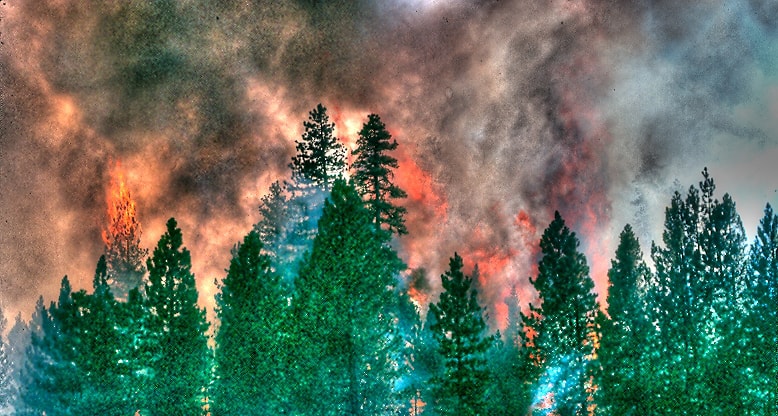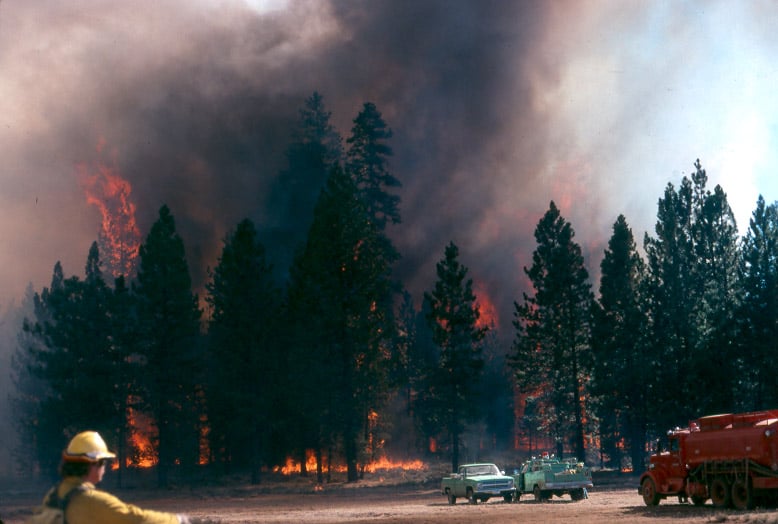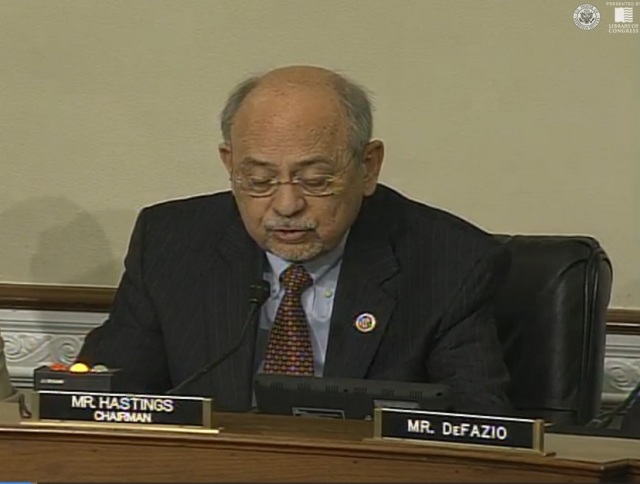Would Mirror Funding Response to other Natural Disasters
December 19, 2013 (Arlington, Virginia) — A group of conservation, timber, tribal, recreation, sportsmen and employer groups praised Senators Wyden (D-OR) and Crapo (R-ID) for introducing the Wildfire Disaster Funding Act of 2013 that would create an emergency funding process for fire response. This funding structure would simulate existing federal funding mechanisms for response to other natural disasters, and prevent “borrowing” from other USDA Forest Service (USFS) and Department of the Interior (DOI) programs. Since 2000 these agencies have run out of money to fight emergency fires eight times.
This language creates a budget cap adjustment for a 30% portion of wildfire disaster funding for USFS and DOI, a structure similar to what the Federal Emergency Management Agency (FEMA) uses for other natural disaster response. This would significantly minimize the need to transfer funds from non-suppression accounts when suppression funds are depleted. For years, the practice of transferring and high suppression costs have negatively impacted agencies’ ability to implement forest management activities.
The additional funding would be separated from other USFS and DOI funding, and could free up as much as $412 million in discretionary funds for forest treatments that help to reduce fire risk and costs, such as Hazardous Fuels removal.
“This leadership from Senators Wyden and Crapo can establish a long-term solution for fire suppression funding that will finally end the senseless series of fire transfers and guarantee firefighters adequate resources to protect our communities and lands,” said Darrel L. Kenops, Executive Director of National Association of Forest Service Retirees.
“We need an approach to fire suppression funding which lets Forest Service manage the Forests, instead of constantly moving funding to emergency suppression needs. Wildfire costs and fire borrowing disrupts forest management and other key programs”, said Bill Imbergamo, Executive Director of the Federal Forest Resources Coalition, “This bipartisan bill will help put the Forest Service back in the woods doing what they do best. We appreciate Senator Wyden’s leadership on this issue. He’s done yeoman’s work in developing this approach to fire budgeting. Anyone who cares about our National Forests should get behind this bill.”
“Important USDA Forest Service programs can be and are significantly impacted by fire transfers, including the Land and Water Conservation Fund, urban and community forestry, roads and trail maintenance, wildlife, recreation” said Rebecca Turner, Senior Director of Programs and Policy of American Forests, “including the very programs that would reduce wildfire risk, like State Fire Assistance and restoration. This new proposed mechanism will help stop this from happening.”
Many factors contribute to the increase in wildfire frequency and severity, including changes in climate, build-up of hazardous fuels, and increasing populations in the wildland urban interface. This past decade fires have burned 57% more land than in the previous four decades; the fire season has expanded by two months; and the average size of fires has increased by a factor of five since the 1970s. The frequency and severity of these wildfires need to be matched by significant levels of funding to protect people, water, and wildlife.
“We’re asking House and Senate appropriators to adopt the language in the Wyden/Crapo bill as they work to fund the remainder of FY2014”, said Cecilia Clavet, Senior Policy Advisor on Fire and Forest Restoration of The Nature Conservancy, “we cannot afford another year of inadequate funding levels that force agencies to take away from already constrained programs, including the very ones that would decrease fire risk and costs like restoration.”
“In passing the FLAME Act, Congress intended to fully fund the USFS and DOI’s suppression accounts while eliminating the need to transfer monies from other agency programs to fund emergency wildfire suppression,” said Chris Maisch, Alaska State Forester and President of the National Association of State Foresters, “the practice of transferring funds from non-fire programs has undermined the agencies’ ability to help sustainably manage the nation’s forests that are essential in delivering products, jobs, and many important services including clean air and water, wildlife habitat and other benefits that people value.”
Members of the Fire Suppression Funding Coalition provided a letter to appropriators requesting they adopt language from the Wildfire Disaster Funding bill in the FY2014 appropriations bill.
Members of the Fire Suppression Funding Solutions Partner Caucus include:
1. American Forest Foundation
2. American Forests
3. Federal Forest Resource Coalition
4. Intertribal Timber Council
5. National Association of Forest Service Retirees
6. National Association of State Foresters
7. National Ski Areas Association
8. National Wild Turkey Federation
9. Society of American Foresters
10. Sustainable Northwest
11. The Nature Conservancy
12. The Wilderness Society



